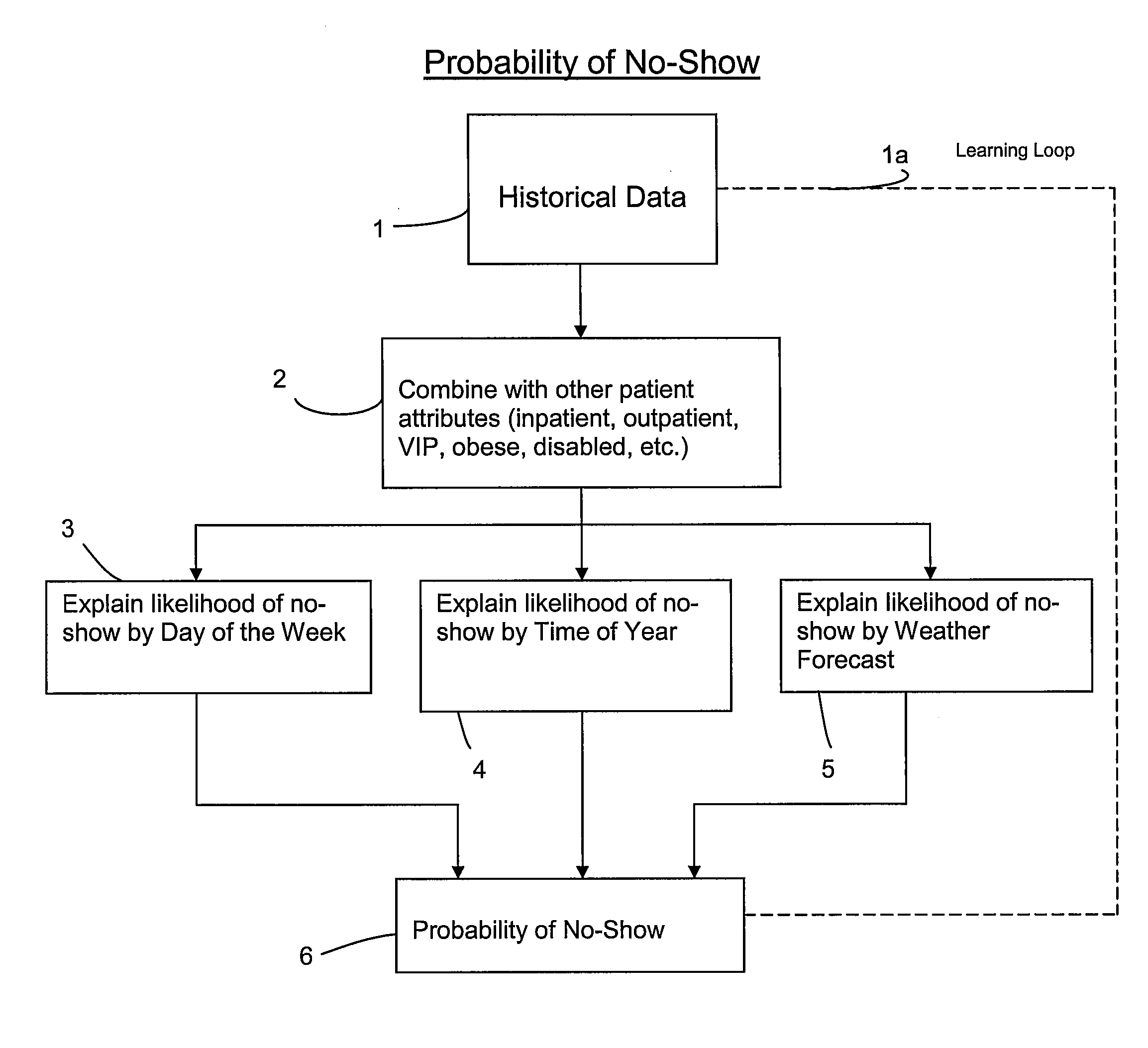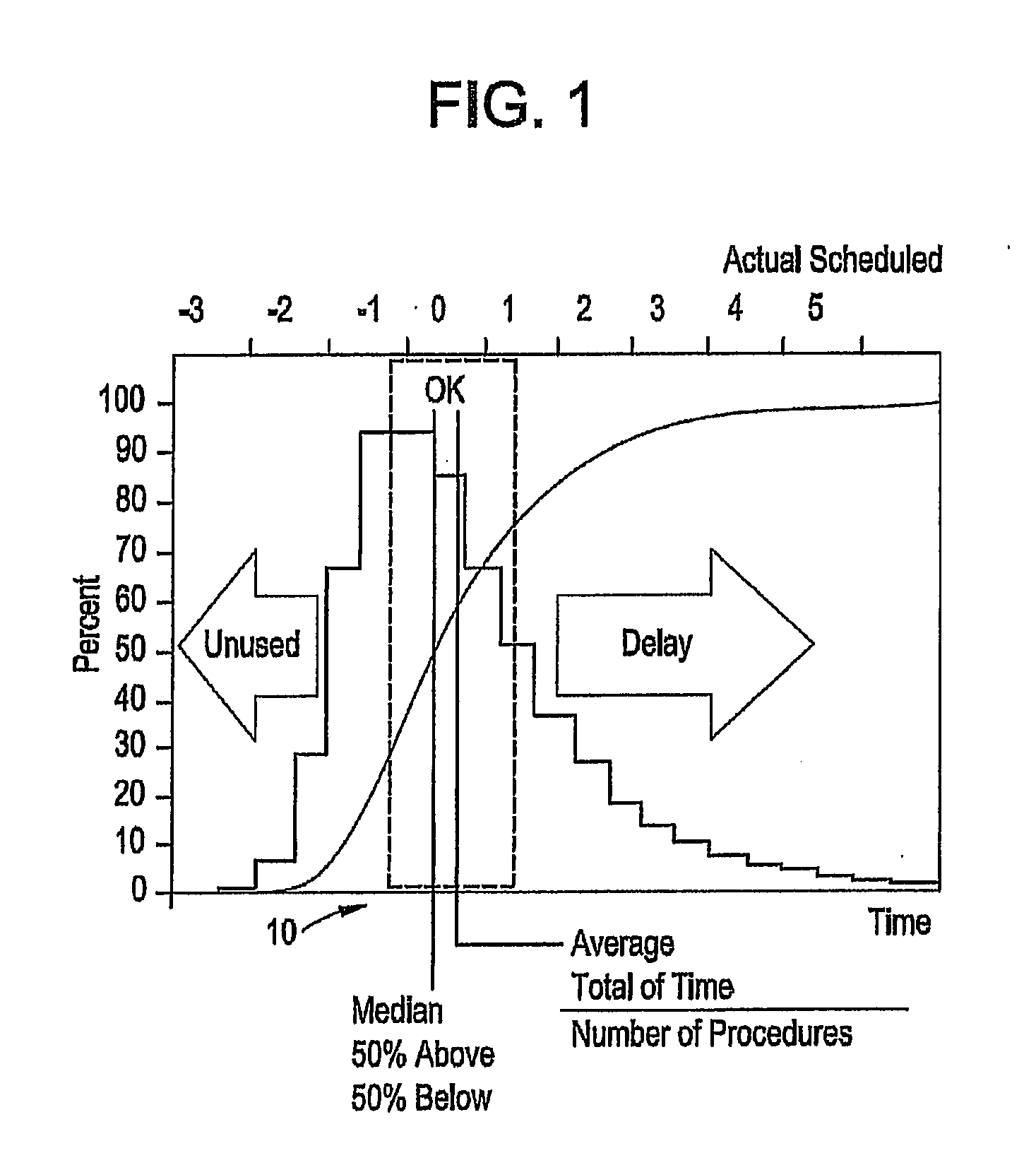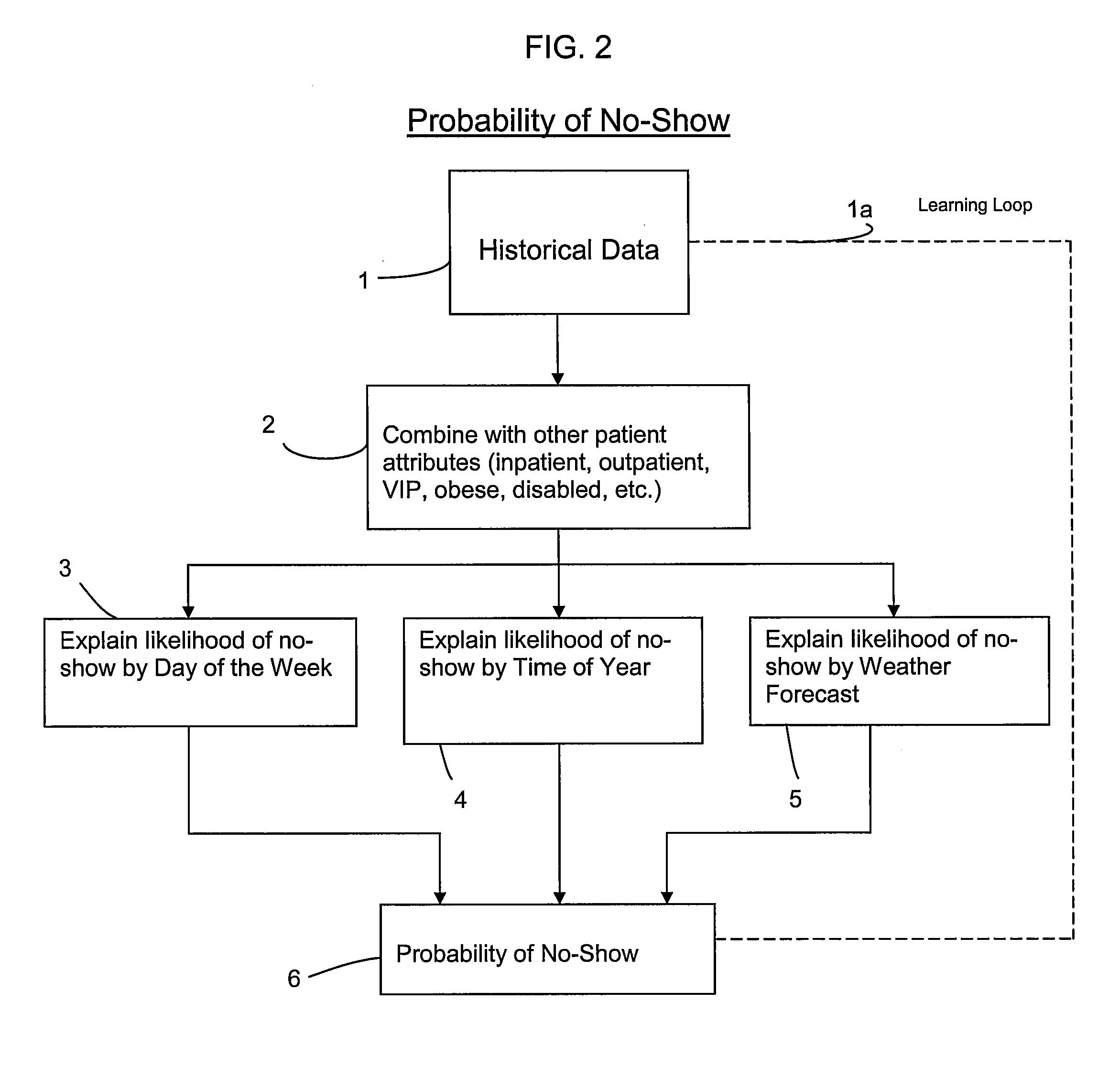Systems for and methods of medical scheduling based on simulation-based optimization
a scheduling optimization and simulation-based technology, applied in the field of scheduling optimization systems and methods, can solve the problems of significant variability as to how long an examination may actually take, insufficient utilization of facility's time optimally, and disruption of existing schedules, so as to maximize facility efficiency, minimize unutilized time, and maximize the target service level
- Summary
- Abstract
- Description
- Claims
- Application Information
AI Technical Summary
Benefits of technology
Problems solved by technology
Method used
Image
Examples
Embodiment Construction
[0013]Certain embodiments of the system will analyze selected patient demographics and procedure characteristics along with historical information to calculate parameters that will be used to optimize the scheduling of procedures at the healthcare delivery institution or hospital. Specific characteristics of a patient's profile are helpful in predicting the amount of time a particular procedure will take. For example, if the patient is in a wheelchair, the likelihood of the procedure taking longer increases. If, for example, a patient scheduled for a particular procedure at a hospital is already staying at the hospital for other in-patient procedures, the likelihood of a no-show decreases substantially. Based on such inferences along with historical data, a probability of occurrence (for example, of a no-show) or an exact point estimate (for example, of a procedure duration) will be calculated.
[0014]There are selected parameters that will be calculated in certain embodiments in orde...
PUM
 Login to View More
Login to View More Abstract
Description
Claims
Application Information
 Login to View More
Login to View More - R&D
- Intellectual Property
- Life Sciences
- Materials
- Tech Scout
- Unparalleled Data Quality
- Higher Quality Content
- 60% Fewer Hallucinations
Browse by: Latest US Patents, China's latest patents, Technical Efficacy Thesaurus, Application Domain, Technology Topic, Popular Technical Reports.
© 2025 PatSnap. All rights reserved.Legal|Privacy policy|Modern Slavery Act Transparency Statement|Sitemap|About US| Contact US: help@patsnap.com



